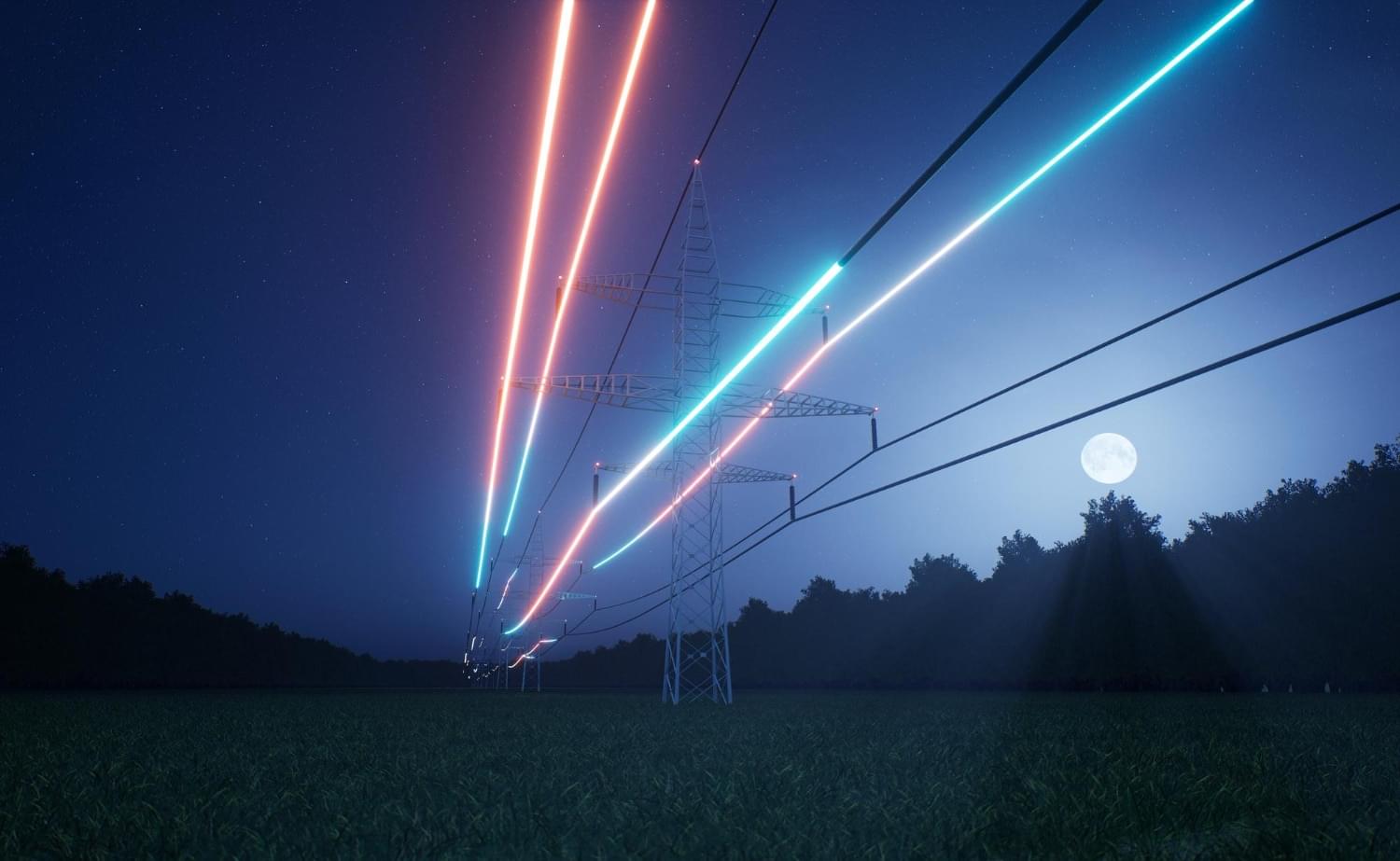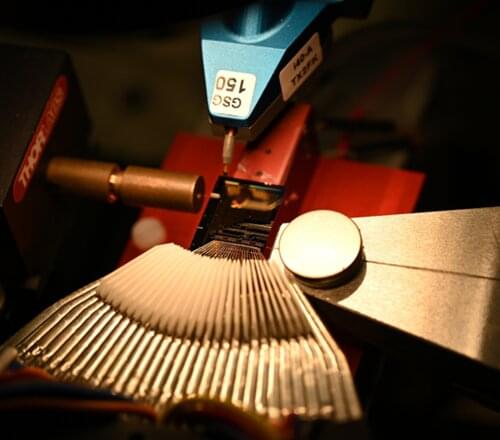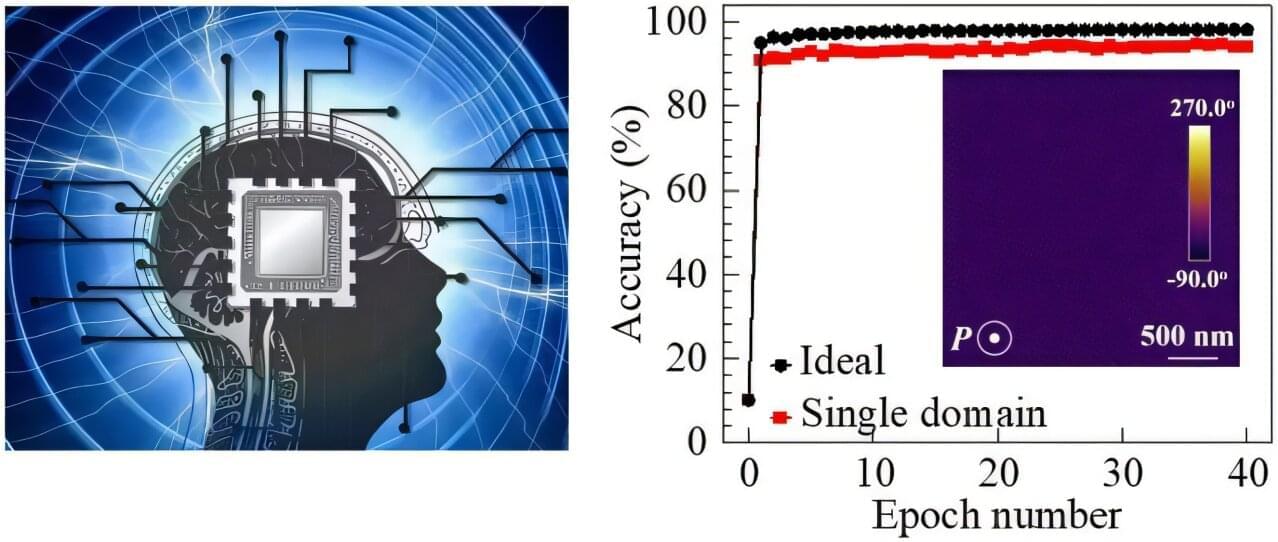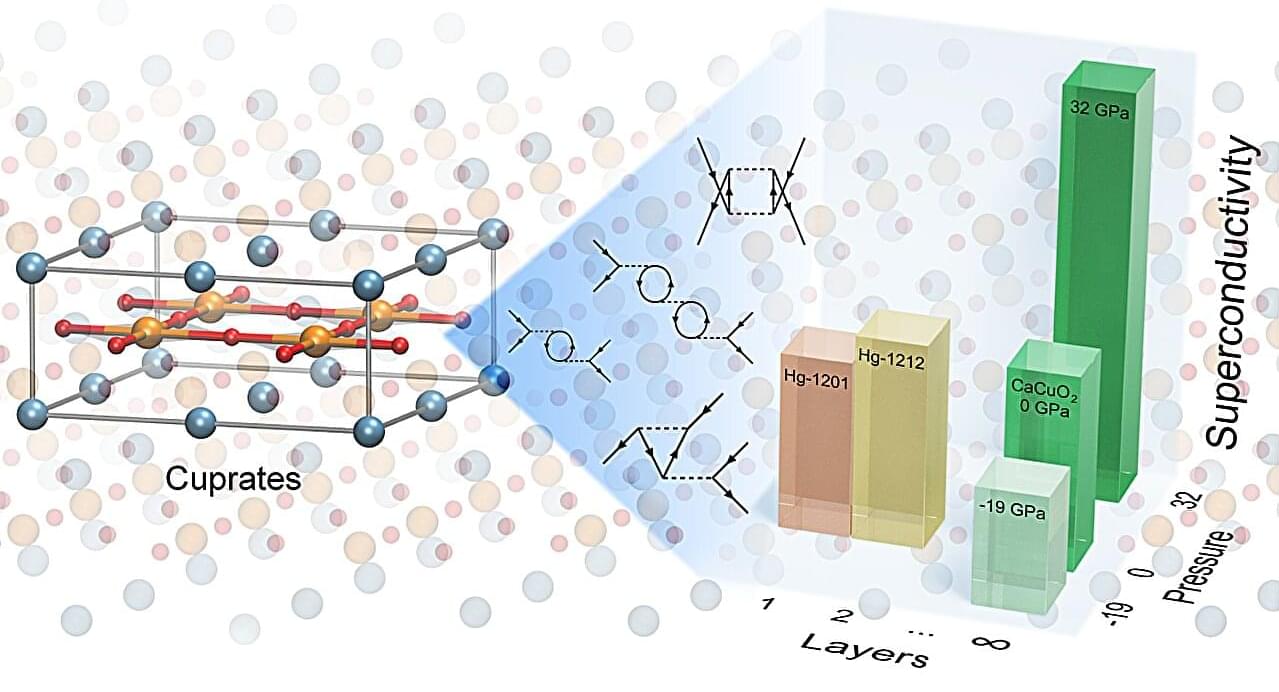A kind of metamaterial that has been beyond the reach of existing technologies so far.



Variability in the brightness of Sagittarius A* (Sgr A•, the black hole at the center of the Milky Way, could emerge through synchrotron radiation emitted by electrons accelerated by the supermassive black hole’s accretion disk [1]. That is the finding of a team of astronomers led by Farhad Yusef-Zadeh at Northwestern University, Illinois. The researchers hope that their results could lead to deeper insights into the distinctive flaring patterns in the material that surrounds many black holes.
Weighing in at just over 4 million solar masses, Sgr A* is a supermassive black hole, which is fueled by the material it draws in from interstellar space. Since it is both relatively close by and vastly more massive than any other body in the Galaxy, Sgr A* provides astronomers with an ideal opportunity to study how fueling material is irradiated, captured, accreted, and ejected by a black hole. In particular, astronomers have identified short outbursts, or flares, in the near-infrared (NIR) emission from infalling material. In many cases, radiation at this frequency is a key tracer of flow dynamics within a black hole’s inner accretion disk and can hint at the mechanisms driving those flows.
Yusef-Zadeh’s team observed these flares several times between 2023 and 2024 using the NIR instrument aboard the JWST observatory. This instrument allowed the team to observe Sgr A* at two different NIR frequencies, which enabled the researchers to study both the time variability of the flares and their energy distribution.

A new study by Rice University researchers Sho Shibata and Andre Izidoro presents a compelling new model for the formation of super-Earths and mini-Neptunes—planets that are 1 to 4 times the size of Earth and among the most common in our galaxy. Using advanced simulations, the researchers propose that these planets emerge from distinct rings of planetesimals, providing fresh insight into planetary evolution beyond our solar system. The findings were recently published in The Astrophysical Journal Letters.
For decades, scientists have debated how super-Earths and mini-Neptunes form. Traditional models have suggested that planetesimals—the tiny building blocks of planets—formed across wide regions of a young star’s disk. But Shibata and Izidoro suggest a different theory: These materials likely come together in narrow rings at specific locations in the disk, making planet formation more organized than previously believed.
“This paper is particularly significant as it models the formation of super-Earths and mini-Neptunes, which are believed to be the most common types of planets in the galaxy,” said Shibata, a postdoctoral fellow of Earth, environmental and planetary sciences. “One of our key findings is that the formation pathways of the solar system and exoplanetary systems may share fundamental similarities.”

However, their reliance on extremely low temperatures has limited their practical applications. Now, scientists may be one step closer to breaking that barrier.
In groundbreaking research led by Professor Kostya Trachenko of the Queen Mary University of London, the maximum temperature at which superconductors can operate has been linked to fundamental constants of nature, such as the electron mass, electron charge, and the Planck constant.
These constants, essential for atomic stability and star formation, set the upper limit for superconducting temperatures between hundreds and a thousand Kelvin. Encouragingly, this range includes room temperature.


Researchers at the University of Twente, in collaboration with the City University of Hong Kong, have designed a cutting-edge programmable photonic chip in a thin-film lithium niobate platform, an important material in photonics. Published in Nature Communications, this work paves the way for next-generation high-performance radar and communication applications.
An important material is changing the way optical chips work, making them smaller, faster, and more efficient: thin-film lithium niobate (TFLN). It offers exceptional properties for how light and electrical signals can interact. This enables the seamless integration of key components—such as electro-optic modulators and signal processors—onto a single chip. As a result, optical devices can achieve unprecedented compactness, efficiency, and performance.
Researchers at the University of Twente have designed a TFLN-based integrated photonic chip, working in close collaboration with City University of Hong Kong, where the fabrication takes place. At the same time, these chips are also being fabricated locally in the MESA+ Nanolab.

Electronic devices rely on materials whose electrical properties change with temperature, making them less stable in extreme conditions. A discovery by McGill University researchers that challenges conventional wisdom in physics suggests that bismuth, a metal, could serve as the foundation for highly stable electronic components.
The researchers observed a mysterious electrical effect in ultra-thin bismuth that remains unchanged across a wide temperature range, from near absolute zero (−273°C) to room temperature.
“If we can harness this, it could become important for green electronics,” said Guillaume Gervais, a professor of physics at McGill and co-author of the study.

A research team led by Prof. Hu Weijin from the Institute of Metal Research (IMR) of the Chinese Academy of Sciences has discovered that single-domain ferroelectric thin films can be efficiently achieved by simply elevating the growth temperature.
Their findings, published in Advanced Functional Materials, offer a straightforward alternative to conventional complex fabrication methods, with significant implications for ferroelectric device performance.
Ferroelectric materials naturally form polydomain structures to minimize electrostatic energy. Nevertheless, single-domain thin films can be achieved through precise control of interfacial atomic layers or strain gradients. The quest for a simple method to obtain a single-domain state and its impact on ferroelectric device performance are of great interest.

Ever since their discovery almost four decades ago, high-temperature superconductors have fascinated scientists and engineers alike. These materials, primarily cuprates, defy classical understanding because they conduct electricity without resistance at temperatures far higher than traditional superconductors. Yet despite decades of research, we still don’t have a clear, comprehensive microscopic picture of how superconductivity emerges in these complex materials.
During my Ph.D. at Caltech, I was intrigued by the profound puzzle presented by high-temperature superconductors: Can we directly compute their superconducting properties from fundamental quantum mechanics without relying on simplified models or approximations? With this question, I embarked on a challenging but rewarding scientific journey.

Boquila trifoliolata plants were purchased from a local store placed in Port Townsend Washington and arrived in 15.24 cm pots. Shortly after arrival plants were reported in 25.4 cm pots filled with high nutrient potting soil with a pH of 6.3, 0.30% nitrogen, 0.45% phosphate, 0.05% potassium, and 1.00% calcium. The plants were watered with distilled water (approximately 236 ml) until they reached field capacity every other day to keep the soil moist. A stone humidifier was placed near the plants to maintain a higher humidity. The experiment was conducted in Magna, Ut, USA (40°42ʹN, 112°06ʹW) during the period from September 2019 to October 2020. The plants were placed in front of a large west facing window. The first leaves sample for analysis was collected in December 2020 and the second sample was collected in June 2021.
Each plant was assigned a number and placed on a growing rack. Two artificial vines were placed above the plants on a wooden trellis. During the winter, the plants grew quickly through the leaves showed poor mimicry of the artificial plants leaves. The original plant that we had did not show good evidence of mimicry until the spring and summer. We decided to continue the experiment and see if there were better results in the warmer months.